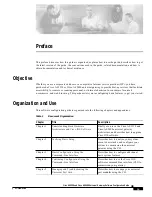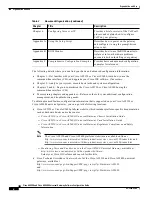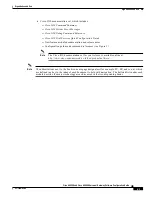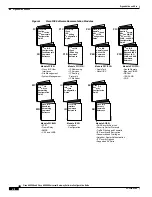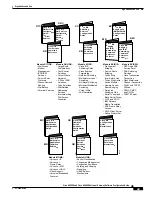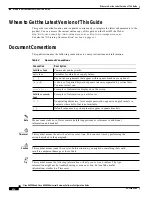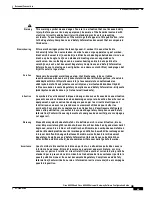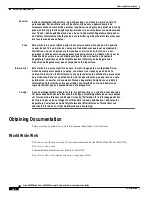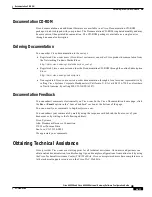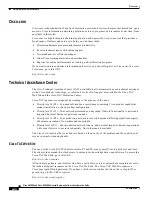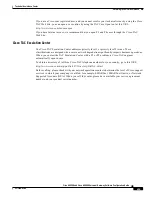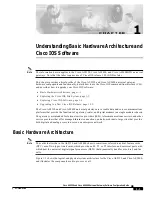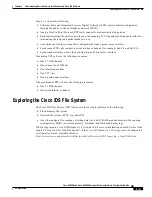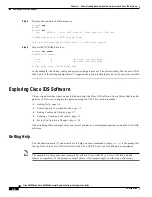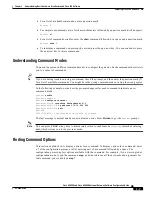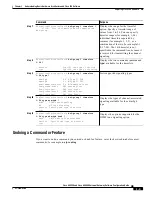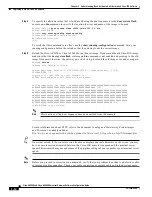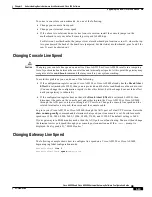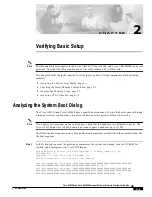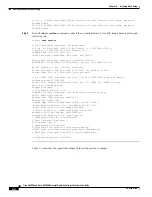
1-3
Cisco AS5350 and Cisco AS5400 Universal Gateway Software Configuration Guide
OL-3418-02 B0
Chapter 1
Understanding Basic Hardware Architecture and Cisco IOS Software
Exploring the Cisco IOS File System
Figure 1-1
shows the following:
•
Client modems and Integrated Services Digital Network (ISDN) routers dial into the gateway
through the public switched telephone network (PSTN).
•
Analog Point-to-Point Protocol (PPP) calls connect to modems inside the gateway.
•
Each modem inside the gateway provides a corresponding TTY line and asynchronous interface for
terminating character and packet mode services.
•
Asynchronous interfaces clone their configurations from a group-async interface.
•
Synchronous PPP calls connect to serial interface channels (for example, Se2/0:1 and Se2/0:2).
•
Synchronous interfaces clone their configurations from a dialer interface.
One analog PPP call uses the following resources:
•
One T1 DS0 channel
•
One channel in a TDM bus
•
One integrated modem
•
One TTY line
•
One asynchronous interface
One synchronous PPP call uses the following resources:
•
One T1 DS0 channel
•
One serial interface channel
Exploring the Cisco IOS File System
The Cisco IOS File System (IFS) feature provides a single interface to the following:
•
Flash memory file system
•
Network file system (TFTP, rcp, and FTP)
•
Any other endpoint for reading or writing data (such as NVRAM, modem firmware, the running
configuration, ROM, raw system memory, Xmodem, and Flash load helper log)
IFS first appeared in Cisco IOS Releases 11.3 AA and 12.0. For more information about IFS, refer to the
chapter “Using the Cisco IOS File System” in the Cisco IOS Release 12.0 Configuration Fundamentals
Configuration Guide, available online at
http://www.cisco.com/univercd/cc/td/doc/product/software/ios120/12cgcr/fun_c/fcprt2/fcifs.htm

